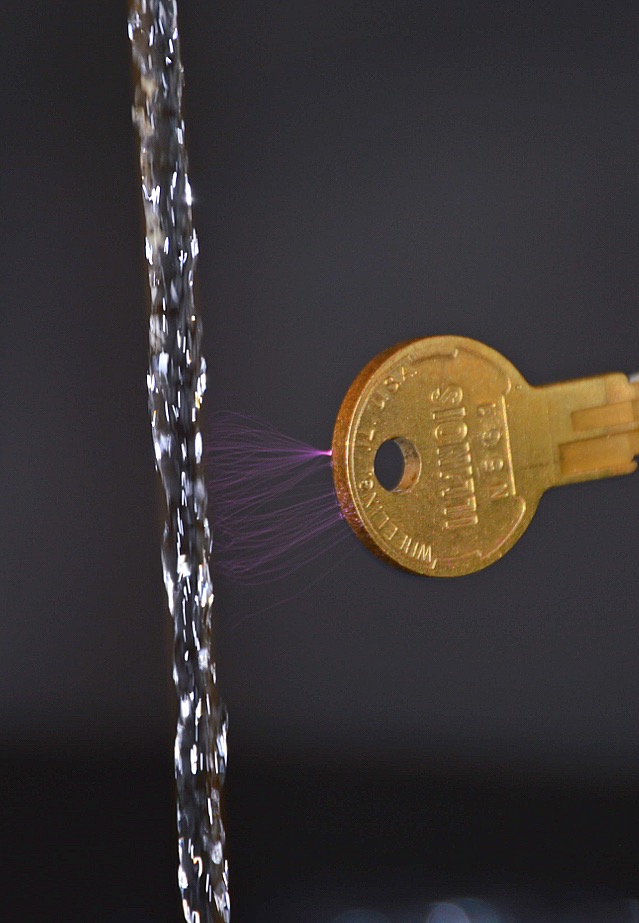2020 Faculty Panel Award Winner – Kamryn Abraskin

A Key Concept
When a key is subjected to large amounts of charge, charge builds up on the perimeter of the key until there is enough motivation for it to jump across air so that it may escape through water, a weak conductor, back into the ground. A Van de Graaff generator was used to build up charge on the key. When particles are swept up as a result of the rubbing belt of the Van de Graaff generator, the metal dome at the top becomes charged. Due to the particles being stripped of their charge in which the belt becomes negatively charged, the metal dome accumulates a positive charge, inducing an electric field surrounding the metal dome. The charge was then transferred down an insulated wire attached to the key, thus inciting the key to become charged. The distance between the key was important in that when the water was too close to the key the charge jumped too frequently whereas when it was too far, the charge jumped infrequently which did not work well for the time exposure. Ultimately, there was an ideal distance between the key and the water in which the charge jumped constantly and was prominent, therefore the picture could be taken with a slow shutter speed to illuminate multiple times the charge jumped. Humidity of the room was an implication, as the electrons were unable to transfer from the key to the stream of water when the room was humid. The charge leaving the key does not always follow the same path, but there is a concentrated area of charge which is most likely due to a small ridge on the edge of the key.
